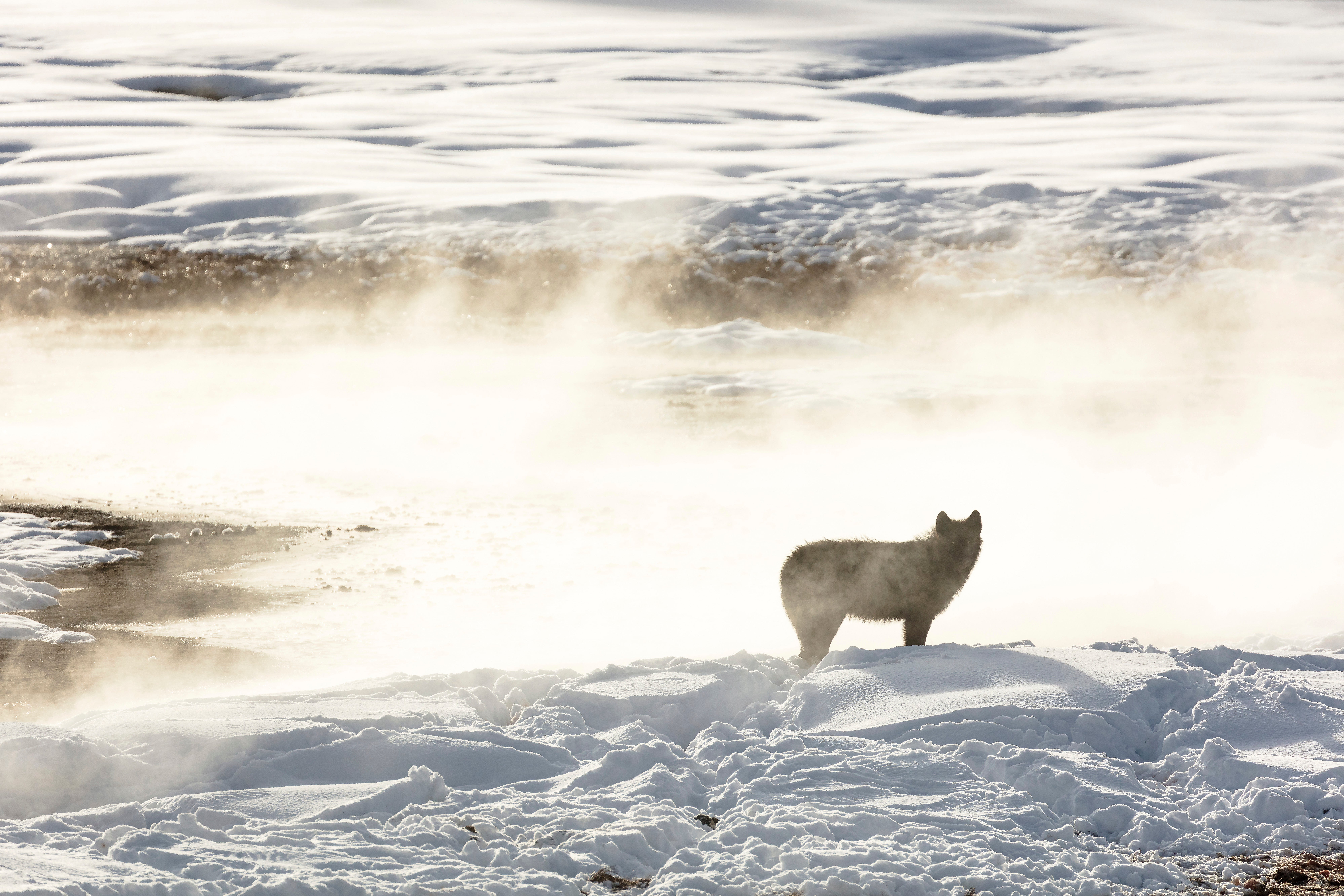Hunters kill 20 Yellowstone wolves that roamed out of park
Twenty of Yellowstone National Park’s renowned gray wolves roamed from the park and were shot by hunters in neighboring states in recent months

Your support helps us to tell the story
From reproductive rights to climate change to Big Tech, The Independent is on the ground when the story is developing. Whether it's investigating the financials of Elon Musk's pro-Trump PAC or producing our latest documentary, 'The A Word', which shines a light on the American women fighting for reproductive rights, we know how important it is to parse out the facts from the messaging.
At such a critical moment in US history, we need reporters on the ground. Your donation allows us to keep sending journalists to speak to both sides of the story.
The Independent is trusted by Americans across the entire political spectrum. And unlike many other quality news outlets, we choose not to lock Americans out of our reporting and analysis with paywalls. We believe quality journalism should be available to everyone, paid for by those who can afford it.
Your support makes all the difference.Twenty of Yellowstone National Park's renowned gray wolves roamed from the park and were shot by hunters in recent months — the most killed by hunting in a single season since the predators were reintroduced to the region more than 25 years ago, according to park officials.
Fifteen wolves were shot after roaming across the park's northern border into Montana according to figures released to The Associated Press. Five more died in Idaho and Wyoming
Park officials said in a statement to AP that the deaths mark “a significant setback for the species’ long-term viability and for wolf research."
One pack — the Phantom Lake Pack — is now considered “eliminated” after most or all of its members were killed over a two-month span beginning in October, according to the park.
An estimated 94 wolves remain in Yellowstone. But with months to go in Montana's wolf hunting season —- and wolf trapping season just getting underway — park officials said they expect more wolves will die after roaming from Yellowstone, where hunting is prohibited.
Park Superintendent Cam Sholly first raised concerns about wolves dying last September near the park's border and more recently urged Republican Montana Gov. Greg Gianforte to shut down hunting and trapping in the area.
Sholly cited “the extraordinary number of Yellowstone wolves already killed this hunting season," in a Dec. 16 letter to Gianforte that was released to AP under a freedom of information request.
Gianforte, an avid hunter and trapper, did not directly address the request to halt hunting in a Wednesday response to Sholly.
“Once a wolf exits the park and enters lands in the State of Montana it may be harvested pursuant to regulations established by the (state wildlife) Commission under Montana law,” Gianforte wrote.
Gianforte last year received a warning from a Montana game warden after trapping and shooting a radio-collared wolf about 10 miles (16 kilometers) north of the park without taking a state-mandated trapper education course.
In his response to Sholly, the governor said Montana protects against overhunting through rules adopted by the wildlife commission, which can review hunting seasons if harvest levels top a certain threshold.
For southwestern Montana, including areas bordering the park, that threshold is 82 wolves. Sixty-three have been killed in that region to date this season, out of 149 wolves killed statewide, according to Montana Fish, Wildlife and Parks.
The most recent wolf killing along the Montana-Yellowstone border happened on New Year's Day. Wolf trapping in the area opened Dec. 21. Under new rules, Montana trappers can now use animal carcasses or other bait to lure wolves into leghold traps or snares.
“Allowances for trapping and especially baiting are a major concern, especially if these tactics lure wolves out of the park,” Yellowstone spokesperson Morgan Warthin said.
Urged by Republican lawmakers, Montana wildlife officials last year loosened hunting and trapping rules for wolves statewide and eliminated longstanding wolf quota limits in areas bordering the park. The quotas allowed only a few wolves to be killed along the border annually.
The original quotas were aimed at protecting packs that draw tourists to the region from around the world, because they can often be spotted in the wild.
Montana's effort to make it easier to kill wolves mirrors recent actions by conservative officials in other states such as Idaho and Wisconsin.
The changes came after hunters and ranchers successfully lobbied for measures to reduce wolf populations that prey on big game herds and occasionally on livestock.
But the states' increased aggression toward the predators has raised concerns among federal wildlife officials. In September, the U.S. Fish and Wildlife Service said it would examine if federal endangered species protections should be restored for wolves in northern U.S. Rockies states including Montana, Idaho and Wyoming.
Protections for the wolves were lifted a decade ago based in part assurances that states would maintain viable wolf populations.